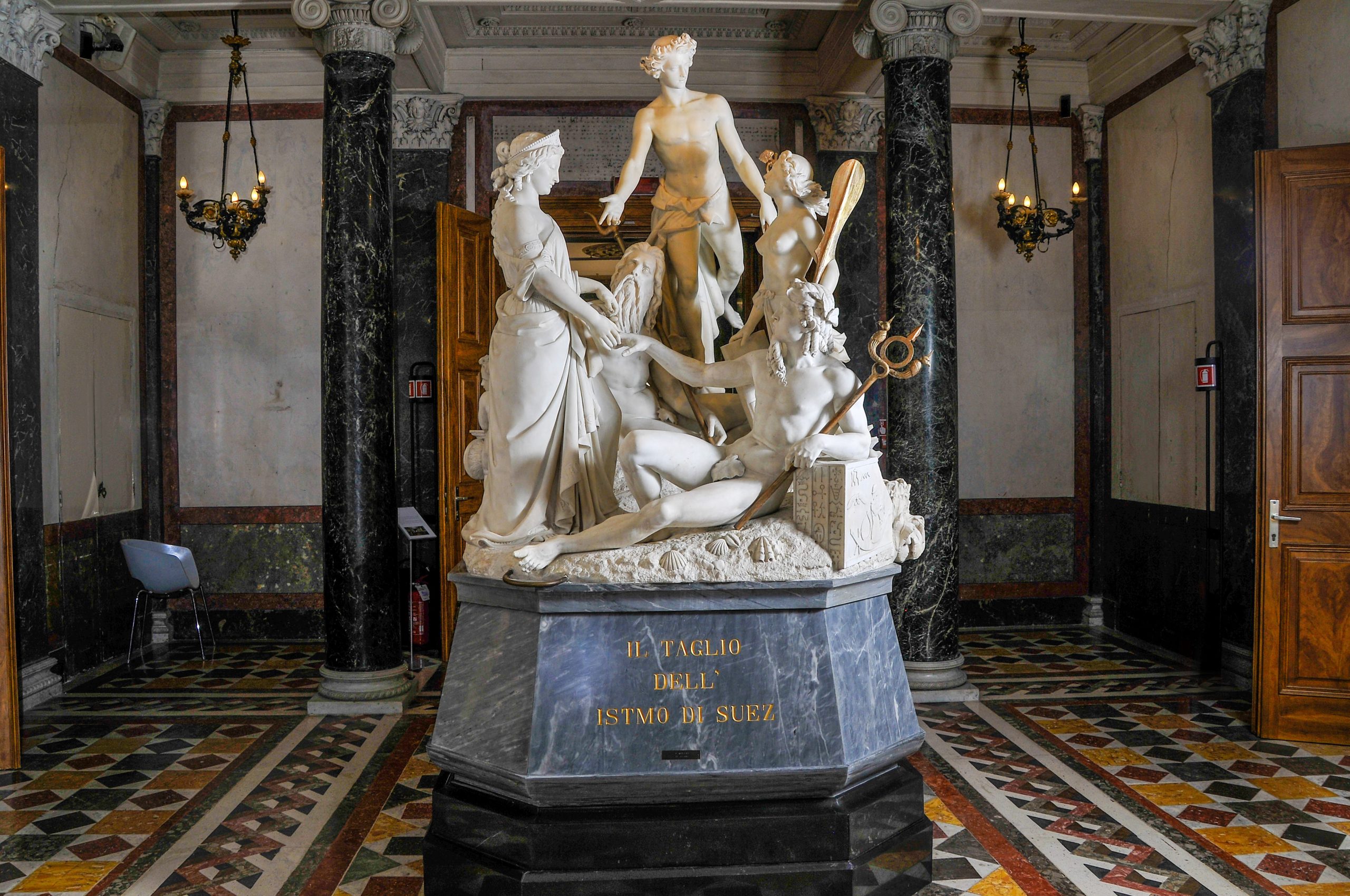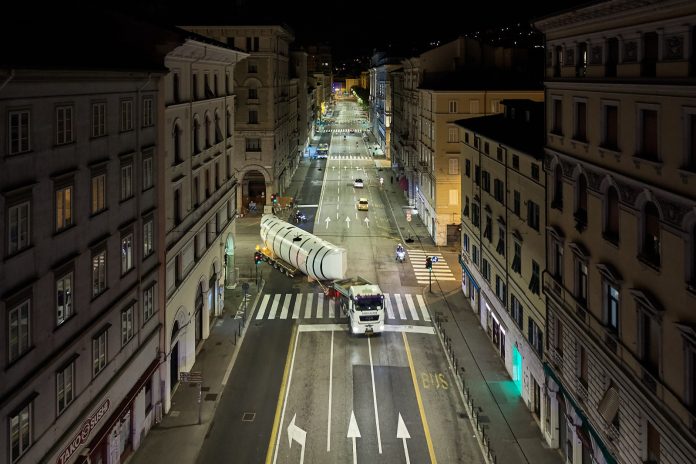by InTrieste
In the quiet hours between Monday night and early Tuesday morning, a striking symbol of Trieste’s maritime and scientific heritage embarked on a carefully coordinated journey through the city. A full-scale replica of the Batiscafo Trieste, the pioneering deep-sea submersible, was relocated from Piazza Unità d’Italia, the city’s grand main square, to the Diego de Henriquez War for Peace Museum, where it will become a centerpiece of future exhibitions.
The slow procession wound its way through some of Trieste’s most central streets — Riva 3 Novembre, Piazza della Borsa, Corso Italia, and Largo Barriera — before arriving at the museum grounds on Via Cumano. The nocturnal move was designed to minimize disruption in the city center.
The replica honors the original Trieste, conceived by Swiss scientists Auguste and Jacques Piccard and brought to life in Trieste with support from local collector Diego de Henriquez, who championed its scientific and symbolic significance during the tense early years of the Cold War. The vessel would later achieve world fame: in 1960, an upgraded version carrying Jacques Piccard and U.S. Navy Lieutenant Don Walsh reached 10,916 meters in the Challenger Deep of the Mariana Trench, the deepest known point on Earth. The original submersible is preserved at the National Museum of the U.S. Navy in Washington, D.C.
City officials see the replica as a key addition to Trieste’s growing network of museums tied to 20th-century history. Beginning in 2026, it will serve as the flagship exhibit for the Henriquez Museum, whose broader relaunch will link the story of the Trieste to the region’s complex past — from World War I to the dissolution of Yugoslavia — and to nearby memorial sites such as the Risiera di San Sabba and the Foiba di Basovizza.
“The project must be understood as part of a broader strategy of historical and scientific outreach connected to Diego de Henriquez and his museum,” said Giorgio Rossi, Trieste’s municipal councillor for culture. “In 2026, the museum’s relaunch will be a central theme, helping frame the turbulent twentieth century in this borderland region.”
The replica, designed at true-to-life scale to reflect the vessel’s 1953 configuration — when it reached a depth of 3,150 meters in the Tyrrhenian Sea — was commissioned by the Mare Nordest association and produced by M23 Srl, a Lombardy-based company specializing in advanced submersibles and hyperbaric systems. Rolex supported the initiative, providing a reproduction of the watch worn during the original dives.
Several regional institutions contributed to the project, including the CRTrieste Foundation, the public transport authority Trieste Trasporti and the Trieste Convention & Visitors Bureau.
The city will deepen its celebration of the vessel in January, when the national premiere of Operazione Batiscafo, a film by Massimiliano Finazzer Flory commissioned by the municipality, is scheduled to take place in Trieste.
With its arrival at the museum, the Trieste once again positions the city as a crossroads of maritime history, scientific ambition and cultural memory — a reminder of the depths once charted from this Adriatic port and the horizons it still seeks to explore.































